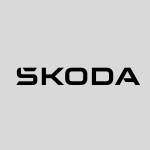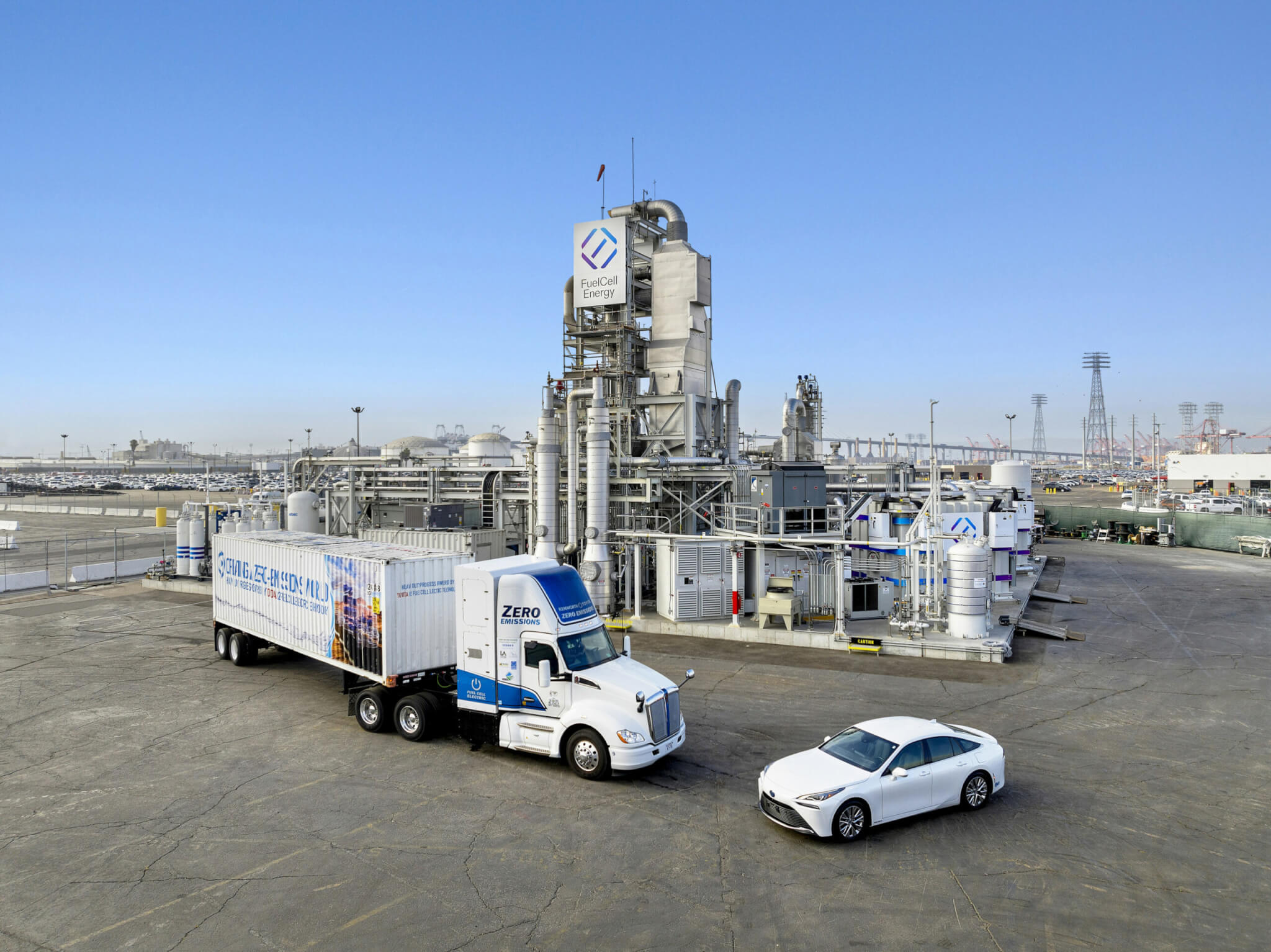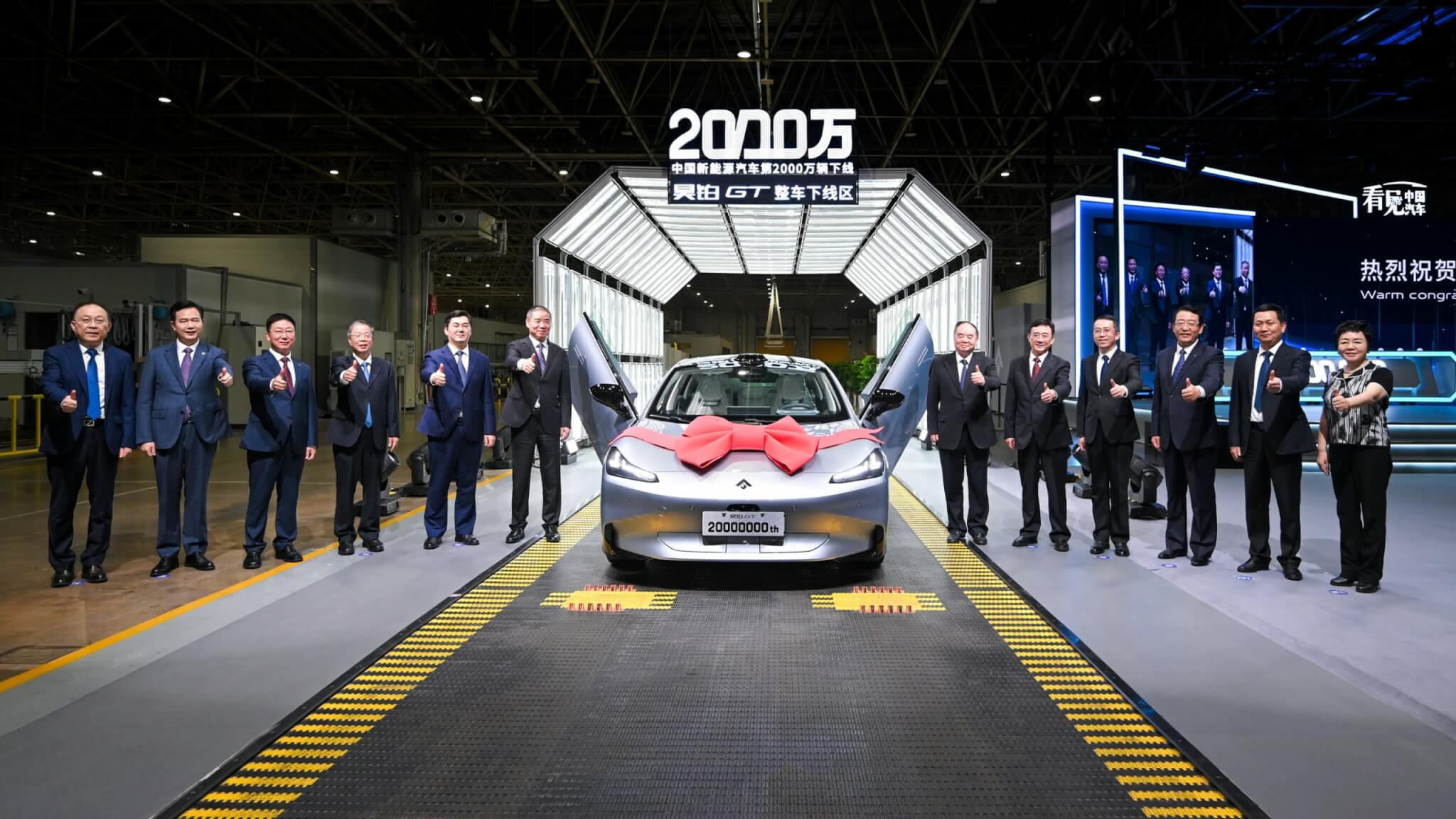To level the playing field between EU and non-EU companies while helping to reduce global CO2 emissions. This is the aim of the European Commission’s regulation on the introduction of a border carbon offset mechanism (CBAM). The document came into force on 1 October this year and it is high time for companies importing certain selected raw materials and products from non-EU countries to start looking into it. By January 2024, they will already have to file their first quarterly CBAM report to the relevant authority, and if the production of a commodity in the producer country is associated with the emission of large amounts of greenhouse gases, they will have to pay a “carbon duty” in the next phase of CBAM implementation. But no one can yet say for sure how this new instrument will work.
In July 2021, the European Commission adopted a proposal to introduce a Carbon Border Adjustment Mechanism (CBAM). The aim of the CBAM is to levy a so-called carbon duty on imports of raw materials and products whose production is linked to the emission of large quantities of greenhouse gases.
Who and what it concerns
In the initial phase, seven product, raw material and energy groups will be monitored: cement, electricity, hydrogen, some nitrogen compounds, fertilisers and ammonia, iron, steel and aluminium. All these commodities (which are already burdened by emission allowances in the EU, the EU ETS) must start to be monitored by importers in much greater detail than has been the case so far – even if they believe their supplier is producing green or buying emission allowances in their home country. Everything will need to be documented.
Commodities concerned by the CBAM (Commodity/CN code monitored): Cement / 2507 00 80, 2523 10 00 to 2523 90 00, Electricity / 27 16 00 00, Hydrogen /2804 10 00, Nitrogen compounds / 2808, 2418, 2834 21, Fertilisers and ammonia / 2808, 2418, 2834 21, 3102, 3105, Iron and steel / 72, 7301 to 7311, 7318, 7326, Aluminium / 7601 to 7610. Source.
The list of commodities subject to the carbon duty will be gradually extended. The obligation to report data and, in a further phase, to pay a “duty” applies in the European Union to all importers who import listed commodities from non-EU countries, with the exception of Switzerland, Norway, Liechtenstein and Iceland. Most everyone imagines that these will be imports from China and Asian countries, but large portions of the “carbon duty” levied will also apply to EU imports from African countries.
The first report on imported commodities will have to be submitted by companies in January, and will cover the last quarter of 2023. It is unclear at this point whether and how it will be checked that all companies affected have complied. There are also no restrictions in place yet for this transitional period. Importers will have to register during 2025, as the CBAM regulation will be fully implemented from January 2026.
CBAM implementation procedure
- Transition period – On 1 October 2023, the transition period associated with the obligation to submit quarterly CBAM reports began.
- Full implementation – CBAM will be fully implemented from January 2026. It will be necessary to acquire CBAM certificates.
- Extension of the CBAM – From 2030, the CBAM will be extended to the remaining industrial sectors covered by the EU ETS.
Source: EK
“The fact that importers are currently not directly obliged to register does not mean that they should not be interested in the procedure. They need to find out what data they will need to collect and learn how to enter the system,” says Aleš Reho, an expert in indirect and environmental taxes at PricewaterhouseCoopers (PWC) Czech Republic.
Although many things are still unclear, one thing is clear: the data required from importers will be numerous. The basic ones are: the total quantity of imported goods (in tonnes or megawatt hours) broken down by type of goods and production facility, the total actual CO2 emissions per tonne/megawatt hour, the total actual indirect emissions per tonne (not applicable to electricity), the carbon price paid in the country of origin of the goods. For each of these points, there is a calculation methodology in the form of implementing rules for the CBAM Regulation.
Reliable data
Obtaining and reporting reliable and credible information on the carbon burden of production in the supplier’s country may not be easy. Ales Reho admits that this is one of the most common questions from their clients. “If a manufacturer from a third country is a major supplier to the EU or even elsewhere in the world, it probably has already calculated its carbon footprint, because there are more and more buyers who want it – so it will have no problem providing you with the data. A manufacturer that has not yet collected such information will have to start doing so, or the European market will be closed to it.”
In any case, the PWC expert stresses that setting up communication with commodity producers, even legally, will be a fundamental prerequisite for proper reporting – even if the producers themselves are not actually subject to the obligation to report or pay duties. “We are at the beginning and only practice will show how it will work,” says Aleš Reho.
The EC also assumes that there will be no problem with obtaining data, yet next year, or rather the first three quarters, it will tolerate if the data are only estimated on the basis of some standard values determined by the European Commission.
However, this will be different from January 2026, when the CBAM regulation is fully implemented. In two years’ time, the so-called data verification mechanism by an accredited verifier will be in place. This will most likely be audit firms, but also other bodies that register with the relevant EC site and demonstrate that they are able to carry out such activities, i.e. measure carbon footprints using certified methods. The manufacturer will then obtain a verification certificate from the verifier, a copy of which will be attached to the reported data by the importer.
CBAM calculation (simplified example)
- The production of 1 tonne of aluminium produces on average 10 tonnes of CO2
- 1 carbon certificate is equivalent to 1 tonne of CO2 and costs €80
- For 1,000 tonnes of aluminium, the CBAM will therefore be approximately 800,000 euros
Source: PWC
Declarants who fail to submit a CBAM report properly or on time will be fined between €10 and €50 per tonne of unreported emissions.
Pressure on ecology
As has already been said, the CBAM regulation is intended to level the playing field between European and non-European producers, on the basis that, for example, steel produced in the EU is logically more expensive because the producer has to buy emission allowances, whereas, for example, a Chinese producer does not have to (or only at a lower price). The Chinese commodity is thus cheaper than the European one, and this needs to change.
However, the European Commissioner for the Economy, Paolo Gentiloni, recently told Reuters: “CBAM is not about protecting trade. It is about protecting the EU’s climate ambition – and trying to raise the level of climate ambition around the world.” The aim, he said, is to encourage a global shift towards greener production and to prevent European producers from relocating to countries with lower environmental standards.
Importers – if given a choice – will certainly choose as suppliers those companies that produce products with the smallest possible carbon footprint, or pay some equivalent of emission charges in their country, or buy emission allowances. The vast majority of developed countries have such a mechanism in place, and some environmental charges are also applied in China.
The EC regulation is based, among other things, on the fact that pressure on producers in supplier countries will lead to their efforts to reduce emissions
What about competitiveness
In October, the online media Euractiv.com surveyed the mood of the European industry regarding the introduction of CBAM. It reported that the German chemical and automotive industries are protesting against the expected bureaucratic burden of the phased-in carbon border duty. Although no one knows the consequences at the moment, representatives of the German chemical industry are already warning of the ‘bureaucratic madness’ that CBAM will create.
According to a report by the multinational think-tank The Conference Board, the direct costs of the carbon levy and the additional administrative costs from CBAM are expected to likely drive up the price of goods and services. Higher prices for products imported into Europe will influence purchasing decisions, which may lead to impacts on global trade, it said.
“Without swift action to resolve the administrative problems importers will start to face, there is a risk that CBAM will act as a drag on the European economy,” said Anuj Saush, head of the European EC G Centre at The Conference Board.
The report also highlights the potential complications arising from the obligation for importers and manufacturers to share detailed information with national authorities – some of which may be confidential.
CBAM certificates
While the carbon offset at the border is simplistically called a “carbon tariff”, the mechanism for paying for imported emissions will work differently. Importers will have to buy so-called CBAM certificates, the equivalent of emission allowances, in advance, but these will not be traded. The CBAM management body will verify that the number of CBAM certificates in the account of an approved declarant (i.e. a person who is authorised to import the goods under consideration on the European market by the CBAM management body at the time of registration) at the end of a calendar quarter corresponds to at least 80 percent of the emissions contained in all goods imported since the beginning of the calendar year.
For those entities that purchase too many certificates and know that they will not use them (the validity of the certificate will be two years), a certain amount will be bought back by the relevant EC authority.
When the CBAM system is fully implemented, importers will surrender CBAM certificates corresponding to the embodied emissions declared in the CBAM declaration by 31 May retrospectively for the previous year.
Instructions on how to get started
The competent authority for the CBAM agenda in the Czech Republic has been designated as the Customs Administration of the Czech Republic together with the Ministry of the Environment. The Customs Administration will be in charge of granting access to the CBAM register established by the European Commission, receiving applications for CBAM declarant authorisations and supervising the fulfilment of obligations for the import of goods. The Ministry of the Environment will carry out checks on CBAM declarations in relation to the embedded emissions and the number of CBAM certificates to be phased out.
A CBAM Trader Portal has been established for quarterly reporting. Access to the portal is only allowed to importers or indirect customs agents who are registered in the UUM&DS (EU Unified User and Digital Signature Management System) to ensure identity verification at login. As the registration in the UUM&DS system is carried out by the Customs Administration of the Czech Republic, it is necessary to apply for access to the CBAM Trader Portal using the electronic form available on the website of the Customs Administration of the Czech Republic under the online forms tab, under Customs Procedure Forms, under the link Application for access to the European Trader Portal.
Further information will be gradually published on the websites of the Customs Administration of the Czech Republic, the Ministry of the Environment of the Czech Republic and the Ministry of Finance of the Czech Republic.
What they think of CBAM
The importers of the affected commodities in the Czech Republic, which include companies in the automotive industry, are aware of the new obligation, but so far they are cautious in estimating the administrative complexity, costs and future price development of products using the charged product groups and raw materials.
ŠKODA AUTO
 “Škoda Auto buys most of its materials and parts for production from suppliers in the European Union, and we import only some iron and steel products from third countries that are subject to the carbon offset mechanism. Nevertheless, we can confirm that the processing and reporting of CBAM will impose some administrative burden and consequently, from 2026 onwards, an increase in costs due to the price of carbon certificates. We are unable to objectively assess the impact of CBAM on the climate ambition of the world as a whole. Regarding the readiness of the CBAM, we have been following the legislative and publication activities of the European Commission for the last few weeks and are doing our best to comply with all regulations.”
“Škoda Auto buys most of its materials and parts for production from suppliers in the European Union, and we import only some iron and steel products from third countries that are subject to the carbon offset mechanism. Nevertheless, we can confirm that the processing and reporting of CBAM will impose some administrative burden and consequently, from 2026 onwards, an increase in costs due to the price of carbon certificates. We are unable to objectively assess the impact of CBAM on the climate ambition of the world as a whole. Regarding the readiness of the CBAM, we have been following the legislative and publication activities of the European Commission for the last few weeks and are doing our best to comply with all regulations.”
VITESCO TECHNOLOGIES
 “In terms of specific commodities and their origin, Vitesco Trutnov imports a number of products, especially from countries such as China, Thailand and the USA, specifically bolts, housings, rings and valves. At present, we do not have specific estimates regarding the possible increase in the prices of these imported commodities as a result of the new duties. As regards the preparation for this new mechanism, the company has already taken the first steps regarding information gathering and data processing. While at the current stage this process is relatively straightforward, the transition to more detailed information from suppliers may present a significant challenge. In terms of the administrative requirements associated with the full implementation of the CBAM and the purchase of carbon certificates, it is premature to assess this as we are still awaiting more detailed specifications and guidelines regarding this regulation.”
“In terms of specific commodities and their origin, Vitesco Trutnov imports a number of products, especially from countries such as China, Thailand and the USA, specifically bolts, housings, rings and valves. At present, we do not have specific estimates regarding the possible increase in the prices of these imported commodities as a result of the new duties. As regards the preparation for this new mechanism, the company has already taken the first steps regarding information gathering and data processing. While at the current stage this process is relatively straightforward, the transition to more detailed information from suppliers may present a significant challenge. In terms of the administrative requirements associated with the full implementation of the CBAM and the purchase of carbon certificates, it is premature to assess this as we are still awaiting more detailed specifications and guidelines regarding this regulation.”
ASSOCIATION OF INDUSTRY OF THE CZECH REPUBLIC, Bohuslav Čížek, Director of the Economic Policy Section
 “CBAM has the potential to help protect European industry from imports from countries that do not have valued climate externalities. However, if it does not work as currently envisaged, and at the same time there is a planned restriction on the free allocation of emission allowances, this will have a very negative impact on domestic energy-intensive firms. They would find themselves in a situation where they would have to pay a negative externality in the form of emission allowances, but would not be protected in any way from imports from abroad (at a lower price, which would not take this into account). Of course, even a functioning CBAM does nothing to address the issue of the competitiveness of European products on non-European markets, as its set-up is aimed only at competition in importing goods. The fact that European production will necessarily become more expensive with the reduction in free allocation of emission allowances is not addressed by the CBAM or any other legislation. We consider this to be the biggest ‘hole’ in the system’s set-up. As regards the readiness of companies, according to the information available to us, at least the larger companies are preparing intensively. The European Commission has prepared a whole set of guidelines for this purpose, but the whole system is challenging for companies, at least at the beginning. In particular, it is not clear whether manufacturers in third countries will be able to adapt to it.”
“CBAM has the potential to help protect European industry from imports from countries that do not have valued climate externalities. However, if it does not work as currently envisaged, and at the same time there is a planned restriction on the free allocation of emission allowances, this will have a very negative impact on domestic energy-intensive firms. They would find themselves in a situation where they would have to pay a negative externality in the form of emission allowances, but would not be protected in any way from imports from abroad (at a lower price, which would not take this into account). Of course, even a functioning CBAM does nothing to address the issue of the competitiveness of European products on non-European markets, as its set-up is aimed only at competition in importing goods. The fact that European production will necessarily become more expensive with the reduction in free allocation of emission allowances is not addressed by the CBAM or any other legislation. We consider this to be the biggest ‘hole’ in the system’s set-up. As regards the readiness of companies, according to the information available to us, at least the larger companies are preparing intensively. The European Commission has prepared a whole set of guidelines for this purpose, but the whole system is challenging for companies, at least at the beginning. In particular, it is not clear whether manufacturers in third countries will be able to adapt to it.”
EY,Stanislav Pokorný, partner of the tax advisory team
 “So far, only selected commodities such as sheets, profiles and the like are subject to the carbon duty. Although this has been proclaimed by the EU, it is not yet clear whether a carbon duty will be introduced in the future also on final products containing these commodities – for example on finished cars – and if so, when and at what level. It cannot therefore be ruled out that in this window European producers of finished products, whether finished cars or components, will be at a cost disadvantage compared to their competitors, which may provide an additional incentive for non-European carmakers to take over European markets. In the longer term, the carbon tariff should help to level the playing field between EU and non-EU producers of selected commodities. Carbon pricing will not only take place in the EU, but is also being intensively pursued in countries such as the US and China and other regions. In the short term, however, the introduction of a carbon tariff is likely to make industrial production in the EU more expensive, and not only for EU customers.”
“So far, only selected commodities such as sheets, profiles and the like are subject to the carbon duty. Although this has been proclaimed by the EU, it is not yet clear whether a carbon duty will be introduced in the future also on final products containing these commodities – for example on finished cars – and if so, when and at what level. It cannot therefore be ruled out that in this window European producers of finished products, whether finished cars or components, will be at a cost disadvantage compared to their competitors, which may provide an additional incentive for non-European carmakers to take over European markets. In the longer term, the carbon tariff should help to level the playing field between EU and non-EU producers of selected commodities. Carbon pricing will not only take place in the EU, but is also being intensively pursued in countries such as the US and China and other regions. In the short term, however, the introduction of a carbon tariff is likely to make industrial production in the EU more expensive, and not only for EU customers.”
Contact
Next articles and interviews
Next articles and interviews
+ Show

 “Škoda Auto buys most of its materials and parts for production from suppliers in the European Union, and we import only some iron and steel products from third countries that are subject to the carbon offset mechanism. Nevertheless, we can confirm that the processing and reporting of CBAM will impose some administrative burden and consequently, from 2026 onwards, an increase in costs due to the price of carbon certificates. We are unable to objectively assess the impact of CBAM on the climate ambition of the world as a whole. Regarding the readiness of the CBAM, we have been following the legislative and publication activities of the European Commission for the last few weeks and are doing our best to comply with all regulations.”
“Škoda Auto buys most of its materials and parts for production from suppliers in the European Union, and we import only some iron and steel products from third countries that are subject to the carbon offset mechanism. Nevertheless, we can confirm that the processing and reporting of CBAM will impose some administrative burden and consequently, from 2026 onwards, an increase in costs due to the price of carbon certificates. We are unable to objectively assess the impact of CBAM on the climate ambition of the world as a whole. Regarding the readiness of the CBAM, we have been following the legislative and publication activities of the European Commission for the last few weeks and are doing our best to comply with all regulations.” “In terms of specific commodities and their origin, Vitesco Trutnov imports a number of products, especially from countries such as China, Thailand and the USA, specifically bolts, housings, rings and valves. At present, we do not have specific estimates regarding the possible increase in the prices of these imported commodities as a result of the new duties. As regards the preparation for this new mechanism, the company has already taken the first steps regarding information gathering and data processing. While at the current stage this process is relatively straightforward, the transition to more detailed information from suppliers may present a significant challenge. In terms of the administrative requirements associated with the full implementation of the CBAM and the purchase of carbon certificates, it is premature to assess this as we are still awaiting more detailed specifications and guidelines regarding this regulation.”
“In terms of specific commodities and their origin, Vitesco Trutnov imports a number of products, especially from countries such as China, Thailand and the USA, specifically bolts, housings, rings and valves. At present, we do not have specific estimates regarding the possible increase in the prices of these imported commodities as a result of the new duties. As regards the preparation for this new mechanism, the company has already taken the first steps regarding information gathering and data processing. While at the current stage this process is relatively straightforward, the transition to more detailed information from suppliers may present a significant challenge. In terms of the administrative requirements associated with the full implementation of the CBAM and the purchase of carbon certificates, it is premature to assess this as we are still awaiting more detailed specifications and guidelines regarding this regulation.” “CBAM has the potential to help protect European industry from imports from countries that do not have valued climate externalities. However, if it does not work as currently envisaged, and at the same time there is a planned restriction on the free allocation of emission allowances, this will have a very negative impact on domestic energy-intensive firms. They would find themselves in a situation where they would have to pay a negative externality in the form of emission allowances, but would not be protected in any way from imports from abroad (at a lower price, which would not take this into account). Of course, even a functioning CBAM does nothing to address the issue of the competitiveness of European products on non-European markets, as its set-up is aimed only at competition in importing goods. The fact that European production will necessarily become more expensive with the reduction in free allocation of emission allowances is not addressed by the CBAM or any other legislation. We consider this to be the biggest ‘hole’ in the system’s set-up. As regards the readiness of companies, according to the information available to us, at least the larger companies are preparing intensively. The European Commission has prepared a whole set of guidelines for this purpose, but the whole system is challenging for companies, at least at the beginning. In particular, it is not clear whether manufacturers in third countries will be able to adapt to it.”
“CBAM has the potential to help protect European industry from imports from countries that do not have valued climate externalities. However, if it does not work as currently envisaged, and at the same time there is a planned restriction on the free allocation of emission allowances, this will have a very negative impact on domestic energy-intensive firms. They would find themselves in a situation where they would have to pay a negative externality in the form of emission allowances, but would not be protected in any way from imports from abroad (at a lower price, which would not take this into account). Of course, even a functioning CBAM does nothing to address the issue of the competitiveness of European products on non-European markets, as its set-up is aimed only at competition in importing goods. The fact that European production will necessarily become more expensive with the reduction in free allocation of emission allowances is not addressed by the CBAM or any other legislation. We consider this to be the biggest ‘hole’ in the system’s set-up. As regards the readiness of companies, according to the information available to us, at least the larger companies are preparing intensively. The European Commission has prepared a whole set of guidelines for this purpose, but the whole system is challenging for companies, at least at the beginning. In particular, it is not clear whether manufacturers in third countries will be able to adapt to it.” “So far, only selected commodities such as sheets, profiles and the like are subject to the carbon duty. Although this has been proclaimed by the EU, it is not yet clear whether a carbon duty will be introduced in the future also on final products containing these commodities – for example on finished cars – and if so, when and at what level. It cannot therefore be ruled out that in this window European producers of finished products, whether finished cars or components, will be at a cost disadvantage compared to their competitors, which may provide an additional incentive for non-European carmakers to take over European markets. In the longer term, the carbon tariff should help to level the playing field between EU and non-EU producers of selected commodities. Carbon pricing will not only take place in the EU, but is also being intensively pursued in countries such as the US and China and other regions. In the short term, however, the introduction of a carbon tariff is likely to make industrial production in the EU more expensive, and not only for EU customers.”
“So far, only selected commodities such as sheets, profiles and the like are subject to the carbon duty. Although this has been proclaimed by the EU, it is not yet clear whether a carbon duty will be introduced in the future also on final products containing these commodities – for example on finished cars – and if so, when and at what level. It cannot therefore be ruled out that in this window European producers of finished products, whether finished cars or components, will be at a cost disadvantage compared to their competitors, which may provide an additional incentive for non-European carmakers to take over European markets. In the longer term, the carbon tariff should help to level the playing field between EU and non-EU producers of selected commodities. Carbon pricing will not only take place in the EU, but is also being intensively pursued in countries such as the US and China and other regions. In the short term, however, the introduction of a carbon tariff is likely to make industrial production in the EU more expensive, and not only for EU customers.”






